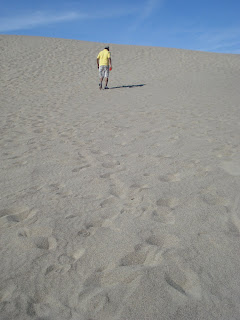
We Indians are known for our incessant need to find 'value' in what ever we buy. Be it a INR 50 Lac apartment or a INR 5 candy bar. The 20% extra on the wrapper / brochure is bound to figure in our calculations. Economists world over have praised us, comedians world over have mocked us on this quality of ours. Reams of papers written on this subject and years of research has come to the same conclusion - We all have what will be defined in US medical journals as 'OCDV - Obsessive Compulsive Disorder for Value'. It would go something on the lines of - 'pervasive pattern of preoccupation to find value in anything that we put our 'naya paisa' into at the expense of our desires / wishes'.
It is fairly simple to understand the origins of this affliction (at least in my lay mind). From the early 19th century poverty was rampant and a vast majority of us were very much in the 1st stage of Maslow's hierarchy. Independence did not bring the promised 'manna' to our folks and 60 years ago we were still a fledgling country trying to stand on our own feet unable to feed a large proportion of out population.'Roti, Kapda aur makan' - was the great 'Indian' dream (makan coming a far 3rd and aptly so). 'More from less' was the mantra and the only constant was - How could one make his Rupee stretch?
As we started prospering in the 90s, thanks to the economic liberalization policies, this behaviour could have rescinded. Far from it, with money in their pockets, Indians forced the markets to try harder by offering an even wider choice of goods at lower price points. And at the turn of the millennium the new brand-conscious young India started thronging the 'Value' Marts and Factory outlets to satisfy their urge to be trendy while making sure they don't burn a hole in their pockets. Generations had hammered this thought process into us from our fore-fathers was now encoded in out genetic make-up. That in my opinion is why we are as We are.
So what does this OCDV cost us? I don't mean in terms of Rupees or Dollars? I mean in terms of happiness / satisfaction / pleasure of having something which you really want today and not 3 months down the line (when the prices fall). How many times do we give up on something we want because we 'feel' it does not seem to be priced right?
A recent incident comes to mind on this topic. We (my wife and I) wanted to upgrade our camera - buy one with a good zoom, wide angle lens and the works for over 6 months. We did our research, visited stores (to get a 'feel' of the cameras we liked - another Indian trait), compared costs on 100's of sites to see where we would get the best 'click' for our buck. We finally zeroed in on the model we wanted and then the waiting game began.
Discounted Sale-days came and went - Independence day, Labour day, Halloween, Thanksgiving (the much vaulted Black Friday), Christmas, New year. And we waited. Waited for the day when the camera we wanted, the camera we loved, would be available for a price we felt would be the right 'value' for what we were paying. In the meanwhile, we had some amazing vacations (inc. the one in Death Valley mentioned in my last blog - http://deepakjoshi19.blogspot.com/2011/03/deserted-in-desert.html). In all those places we were strung with our poor lil' DSC clicking pics as best as it could. Finally after months of waiting and watching, we gave up and bought the camera at a slightly lower price (though not what we had hoped for). Today I look back and think - what did We save and what did  we lose?
we lose?
 we lose?
we lose?Make no mistake, I am not ashamed of this trait. And I don't think We (as in all Indians) should be. It is a trait which has helped us keep afloat in the worst of times and will do so in the years to some. I am proud that this is one idiosyncrasy I will pass on to my children and they will to theirs. But this does not stop me from wondering - where, when and how many times have I killed a desire to find that ever-illusive 'value' ....










